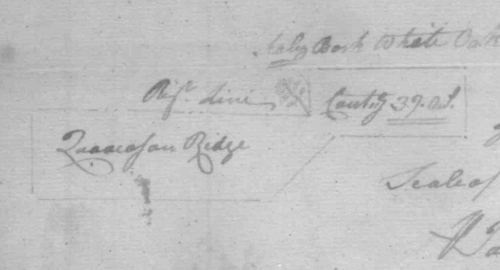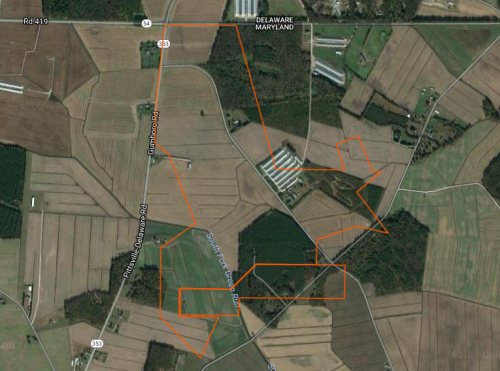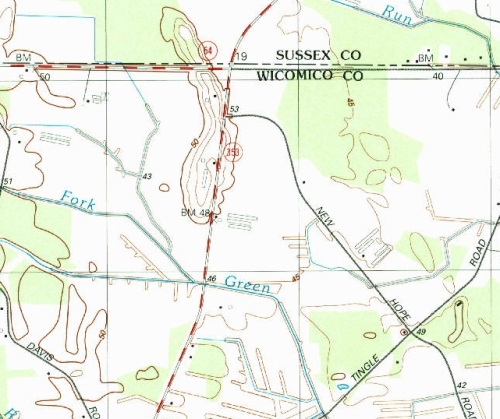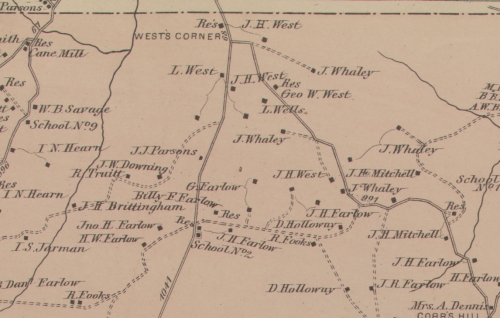A conjecture of the weather for the year 1867
Tuesday January 1th There is snow on the ground to the depth of six inches and is cloudy all day with mist of rain and snow all day with freezing and sleet
Wensday 2th It has snowed to day and is still cloudy with the wind N W
Thursday 3 Clear and worm this morning but cloudy and cold this evening
Friday 4th It is clear and worm over head today and the snow is melting very fast
Saturday 5th Clear and worm wind S. Snow melting
Sunday 6 Clear and worm wind S. W.
Monday 7 Cloudy and cool wind N. W.
Tuesday 8 It is cloudy to day N. W. snow to night
Wensday 9th It is clear and worm and the wind S. snow melting
Thursday 10th It is cloudy all day. North wind.
Friday 11 Clear to day
Saturday 12 Clear and warm this morning
Sunday 13 Snow this morning but clear this evening
Monday 14 Snow all day to day wind N. W.
Tuesday 15 Snow this morning but clear this evening
Wensday 16 Clear and cold here to day Wind S.
Thursday 17 Clear and very cold to day Wind W.
Friday 18 It is clear and cold here to day wind N. W.
Saturday 19 Clear and cold
Sunday 20 It is snowing very fast all day to to day and rain and blewing to night
Monday 21 Cloudy with plenty of snow to day
Tuesday 22 Clear and cold to day wind N. W.
Wensday 23 Clear and cold to day wind N. W.
Thursday 24 It is clear and moderate this morning it has been worm to day clear and cold hear to night wind N. W.
Friday 25 Cloudy and worm the snow is melting to day
Saturday 26 Cloudy and worm to day here but clear and cold to night wind N. W.
Sunday 27 Clear and moderate this morning
Monday 28 Clear and cold here to day wind N. W.
Tuesday 29 Clear and cold and freezing all day N W
Wensday 30th Clear and cold and wind N. W. in the morning and N. E. in the evening
Thursday 31th Cloudy with some snow this morning but clear and worm this evening Wind S.
February 1 1867 Friday It is smokey and very worm and it is thawing very much to day here
Saturday 2th Cloudy with rain and very worm and smokey with a general thaw wind S.
Sunday 3th Cloudy and worm wind S. and S. W. and W. and North West
Monday 4th It is cloudy and worm to day the ice in the river broke yesterday being 37 days that it has been frozen over this winter
Tuesday 5th Clear and worm to day Wind W. N. W. N. I have been spliting rails for the last two days itis the first towards farming we have don this year
Wensday 6th Clear and worm to day wind N. W.
Friday 8th It has rained all day wind N. E. the sun has not been seen here to day
Saturday 9th It has rained all day and late this evening it rained very fast wind S. S. W. and W.
Sunday 10th Clear and cold to day and freezing very hard and the wind blowing a gale from North. N. W.
Monday 11th Clear and cold to day. Wind N. W
Tuesday 12 Clear and worm wind S and S. E.
Wensday 13th Clear and worm this morning cloudy and worm this evening Wind E. S. E.
Thursday 14 Clear and very worm to day but cloudy to night Wind. S. E.
Friday 15th It has rained all day to day wind blowing from North East N. E.
Saturday 16th It is cloudy and smokey with some rain Wind North East but west to night
Sunday 17 Clear windy and worm Wind N. W.
Monday 18th Cloudy and worm Wind S East
Tuesday 19th Clear and worm this morning wind South. Cloudy and worm this evening wind S. E.
Wensday 20th It snowed some last night but has rained this morning wind east and it is cloudy and windy this evening and and to night wind N. E.
Thursday 21th Cloudy and rainy all day to day wind N. E. this morning and West this evening and blowing hard and raining to night
Friday 22th Cloudy and windy this morning clear and windy this evening Wind N. W.
Saturday 23 Cloudy and cold this morning Wind E Clear and pleasant this evening Wind E
Sunday 24th Cloudy and looks very much like rain this morning wind South East it has rained this evening wind N. W.
Monday 25 Cloudy and rainy to day Wind S. E.
Tuesday 26th Clear and worm to day Wind N. W.
Wensday 27th Clear and worm Wind N
Thursday 28th Cloudy and windy and cool Wind S. E
Friday March 1th It is rained all day to day there has been a big fall of water with the wind South east
Saturday 2th It has rained all day with the wind all a round the compass
Sunday 3th It is cloudy and cool this morning wind N. W. it rained this evening wind S. E.
Monday 4 It has rained all day Wind N. E.
Tuesday 5 It has rained and snowed all day to day with the wind N East
Wensday 6 It has snowed all day with Wind N. E.
Thursday 7 It rained this morning Wind N. E. It is variable this evening Wind N. W.
Friday 8 It was clear and worm this morning Wind N. W. Cloudy this evening and cool Wind E
Saturday 9th It was cloudy and pleasant this morning Wind E. It has rained this evening Wind N. E.
Sunday 10th It has rained all day with the Wind N. E.
Monday 10th Clear and worm Wind N. W.
Tuesday 12th Cloudy and rainy to day Wind N. E.
Wensday 13th Cloudy and rainy to day Wind S. and S. E.
Thursday 14th It has snowed all this morning Wind N. W. And cleared off this evening Wind N. W. And it will freeze hard to night
Friday 15 It has been clear and worm this morning Wind [N?] Cloudy and worm this evening with wind east E
Saturday 16th It has snowed all day fast wind N. E.
Sunday 17th It snowed all the morning but cleared off this evening and the sun shone bright and worm the wind N. W.
Monday 18th It has been clear and worm all day to day after the morning Wind N. W.
Tuesday 19th Cloudy and snowed this evening Wind N. E.
Wensday 20th Cloudy and snowed all day Wind N. E.
Thursday 21th It has rained and blew a storm to day with the wind at North east N. E.
Friday 22th It rained and blew a storm all this morning with the wind North east N. E. and it has snowed all this evening and is snowing and blowing a gale to night Wind North West N. W.
Saturday 23th Cloudy with rain this morning wind N. E. Cloudy this evening Wind North east
Sunday 24th Cloudy all day to day and cool Wind N. E.
Monday 25th Clear and worm to day Wind N. West
Tuesday 26th Clear and worm to day there was some ice this morning Wind North West
Wensday 27th It rained all this morning Wind South Cloudy and worm this evening West W.
Thursday 28 Cloudy and windy and cool this evening [W. N. ?] Cloudy cool and very windy this evening wind N. w
Friday 29th Cloudy cool and windy wind N. W.
Saturday 30th Clear and worm to day Wind N. E.
Sunday 31th Clear and worm to day Wind S. N. W.
Monday April 1th Cloudy and rain to day Wind S. W.
Tuesday 2th Clear and windy wind N. W.
Wensday 3th Clear and windy wind to day N. W.
Thursday 4th Clear and windy to day ind N. W.
Friday 5th It has rained to day wind S. E. S. and S. W.
Saturday 6th Clear and windy to day wind N. W.
Sunday 7th Clear and windy to day wind N. W.
Monday 8th Clear and worm and windy wind N. W.
Tuesday 9th Clear and worm to day wind North
Wensday 10th Clear and worm to day wind E. S. E.
Thursday 11th Clear and worm to day wind W
Friday 12th Cloudy and worm to day wind S. W.
Saturday 13th Clear and worm to day wind W.
Sunday 14th Clear and worm to day wind N. E and E
Monday 15th Cloudy and worm to day wind South S
Tuesday 16th Cloudy and worm to day wind South S
Wensday 17th It has rained to day wind South S
Thursday 18th Clear and worm to day wind S. W. W. and N W
Friday 19th Clear and cool to day wind N. W.
Saturday 20th Cloudy and worm to day wind South S
Sunday 21th Clear and worm to day wind North east and E
Monday 22
One wonders why the entries stop at this point. Perhaps with the arrival of spring and consistently warm weather, McCready was just too busy to keep up with them.


























